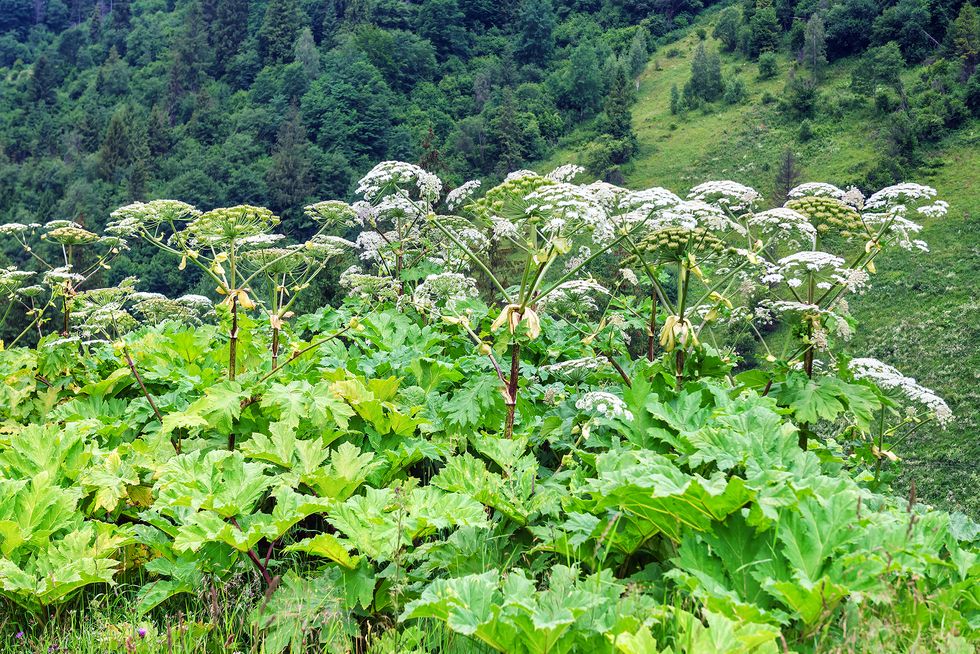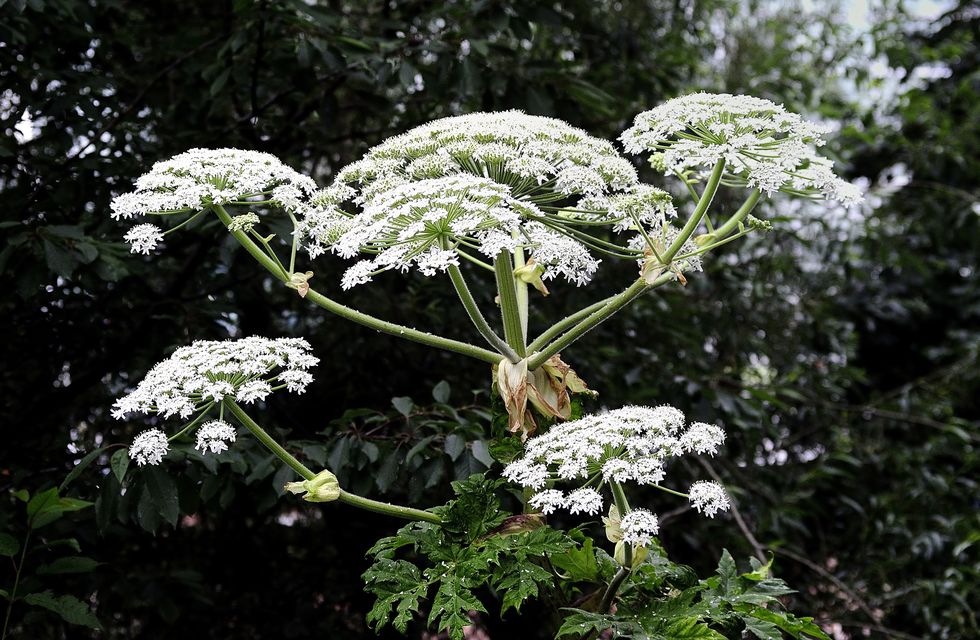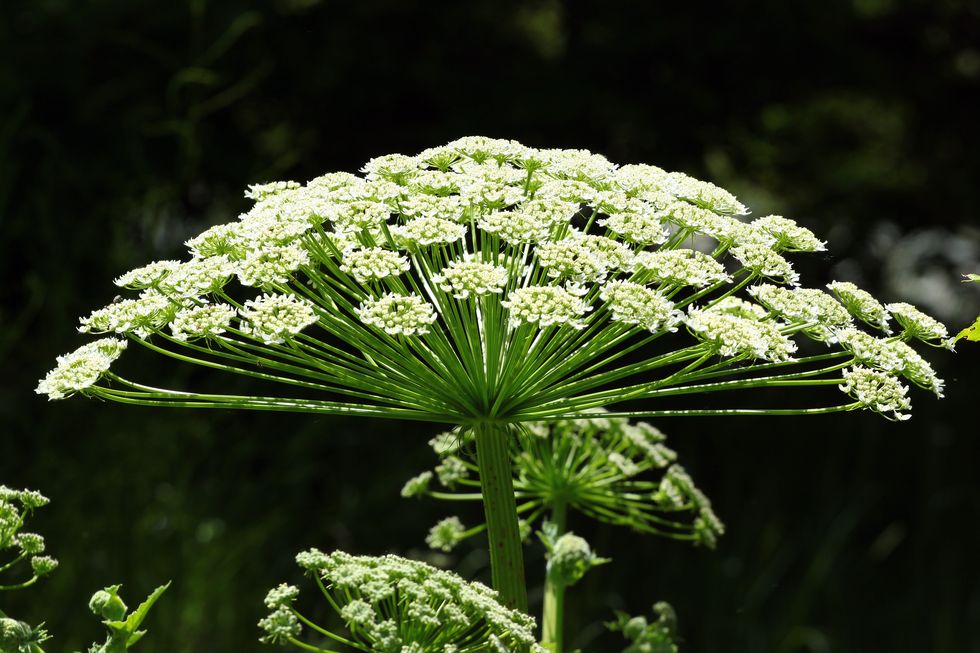In case we weren't all worried enough about tick-borne diseases, here's another outdoor danger to avoid this summer: giant hogweed.
The toxic plant, which causes serious skin inflammation, is generally found in New England, the Mid-Atlantic region, and the Pacific Northwest, but it's putting down roots in a new state: Virginia. Sightings have been reported in multiple parts of the state, including Wight, Middlesex, Clarke, and Shenandoah counties, reports USA Today. At least 30 plants were discovered in Clarke County alone, according to Virginia Tech's Massey Herbarium on Twitter.
Last month, Wight County officials posted a warning to Virginia residents on their Facebook page, along with photos of a giant hogweed rash throughout a period of 10 days. "Giant hogweed makes poison ivy look like a walk in the park," they wrote in the post. "Contact with this plant, combined with exposure to the sun, can produce third-degree burns and permanent blindness."
On Thursday, a Virginia teenager came into contact with a giant hogweed plant. Alex Childress, 17, was working at his summer job as a landscaper when he snipped a bush and it fell on his face, reports NBC affiliate WWBT. At first, he thought it was a bad sunburn, but later realized he'd suffered something much worse when his skin began peeling off in the shower.
What does giant hogweed look like?
Giant hogweed can grow to more than 14 feet tall, with stems that are two to four inches in diameter, according to New York State's Department of Environmental Conservation. Its stems are green, with purple splotches and coarse white hairs, and there will be a thick circle of hairs at the base of the leaf stalks. The weed also has distinctive white flowers that can grow up to two-and-a-half feet in diameter.
❗️Keep in mind that several other dangerous plants closely resemble giant hogweed. Cow parsnip is not as toxic as giant hogweed, but it's most commonly mistaken for the hogweed plant, according to the DEC. Use these helpful charts to identify giant hogweed and distinguish it from other harmful weeds.
Symptoms of exposure to giant hogweed
Giant hogweed sap will severely irritate human skin, with burn-like lesions appearing on the skin within 24 hours, which turn into painful, fluid-filled blisters that become dark and pigmented, according to the DEC. Irritation usually subsides within a few days, but the skin may be hypersensitive to the sun for years, and lesions and blisters can reoccur. Giant hogweed sap can also leave brown or black blotches and scarring on the skin that last for years.
❗️Above all, do not get the sap in your eyes. The most dangerous risk of giant hogweed is temporary or even permanent blindness, which can be caused by even the tiniest bit of sap coming into contact with your eyes.
What to do if you come into contact with giant hogweed
Take action immediately. The DEC recommends washing the area thoroughly with soap and cold water, and keeping your skin out of the sun for at least 48 hours. If the sap is in your eyes, rise them out with water and wear sunglasses. If you begin to have a reaction, see your doctor—they'll be able to prescribe topical steroids that can help reduce the severity of the reaction. For the next few years, you should apply sunscreen or keep the area that was affected covered from the sun whenever possible as it will remain hyper-sensitive to UV light.
How to keep yourself safe
First of all, if you see a giant hogweed plant, don't take a weed-whacker to it—the sap can splatter onto your skin and clothes. Wash any clothes that may have touched the plant, and avoid touching your skin with sap-covered gloves. Report the plant—most states have a form you can fill out online or a number to call—so officials can come verify the plant and discuss management options. By not touching the giant hogweed plant and seeking professional help, you can keep yourself and your family safe from this toxic weed.
Jenae is the editorial assistant for Prevention.com, where she regularly covers nutrition, beauty, celebrity workouts, and health trends. Previously, she was an intern at ELLE and CountryLiving.com and a web producer for O, the Oprah Magazine. When she’s not writing about health and wellness, Jenae is either playing video games or reading tweets about The Bachelor.















